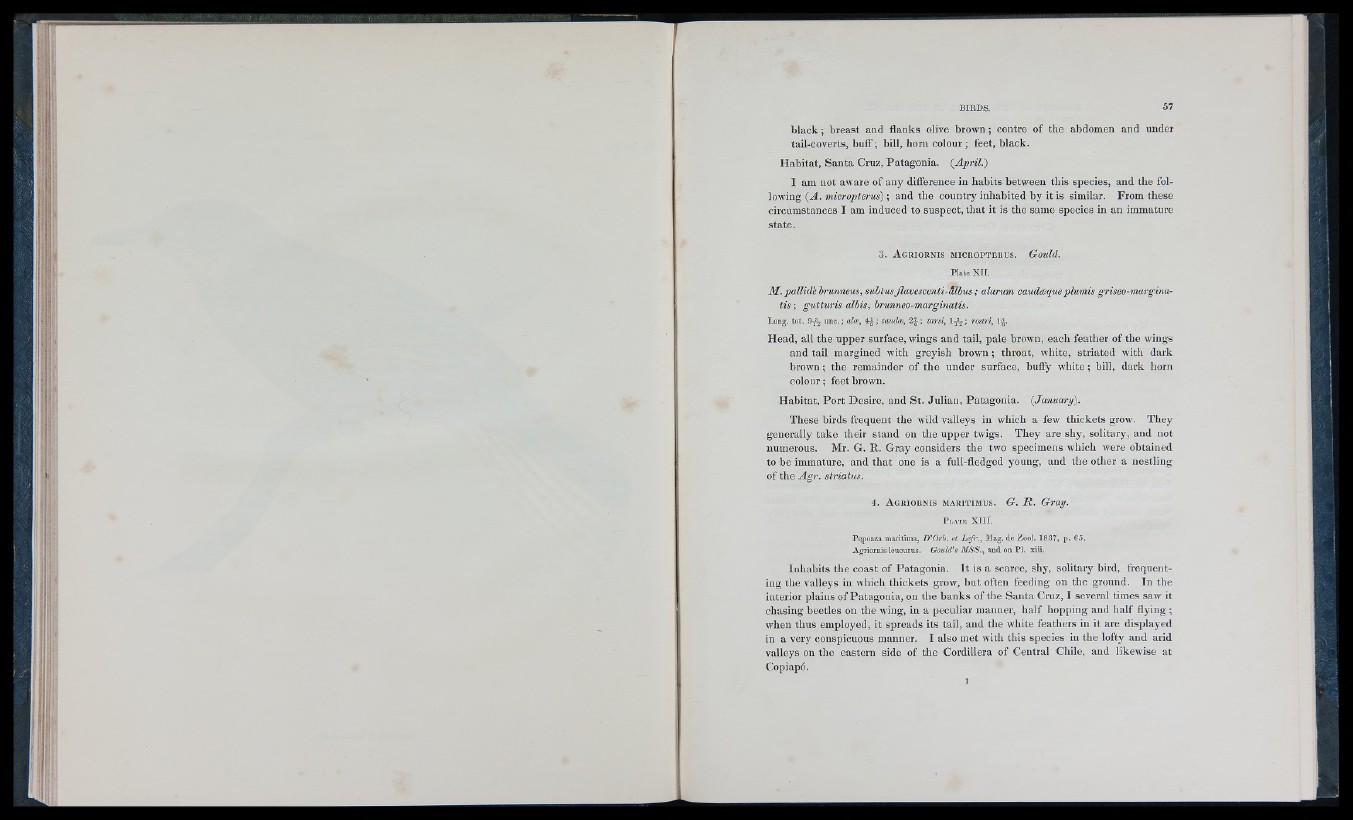
m m m im t
black; breast and flanks olive brown; centre of the abdomen and under
tail-coverts, buff ; bill, horn colour ; feet, black.
Habitat, Santa Cruz, Patagonia. (April.)
I am not aware of any difference in habits between this species, and the following
(A. niicroplerus) ; and the country inhabited by itis similar. From these
circumstances I am induced to suspect, that it is the same species in an immature
state.
3 . A g r io r n i s m ic r o p t e r u s . Gould.
Plate X II.
31. pallidè brunneus, subtus Jlavescenti-albus ; alarum caudoeque plumis griseo-marginatis
; gutturis albis, hrunneo-marginatis.
Long, tot, unc. j aloe, ; caiuke, 2^ ; tarsi, I . ^ ; rostri, 1|-.
Head, all the upper surface, wings and tail, pale brown, each feather of the wings
and tail margined with greyish brown ; throat, white, striated with dark
brown ; the remainder of the under surface, buffy white ; bill, dark horn
colour; feet brown.
Habitat, Port Desire, and St. Julian, Patagonia. (January).
These birds frequent the wild valleys in which a few thickets grow. They
generally take their stand on the upper twigs. They are shy, solitary, and not
numerous. Mr. G. R. Gray considers the two specimens which were obtained
to be immature, and that one is a full-fledged young, and the other a nestling
of the Agr. striatus.
4 . A g r io r n i s m a r i t im u s . G. R . Gray.
P l . a t e X I II.
Pqpoaza maritima, D'Orh. et Lefr., Mag. de Zool. 1837, p. 65.
Agriornis leucurus. Gould’s M S S ., and on PI. xiii.
Inhabits the coast of Patagonia. It is a scarce, shy, solitary bird, frequenting
the valleys in which thickets grow, but often feeding on the ground. In the
interior plains of Patagonia, on the banks of the Santa Cruz, I several times saw it
chasing beetles on the wing, in a peculiar manner, half hopping and half flying ;
when thus employed, it spreads its tail, and the wliite feathers in it are displayed
in a very conspicuous manner. I also met with this species in the lofty and arid
valleys on the eastern side of the Cordillera of Central Chile, and likewise at
Copiap6.